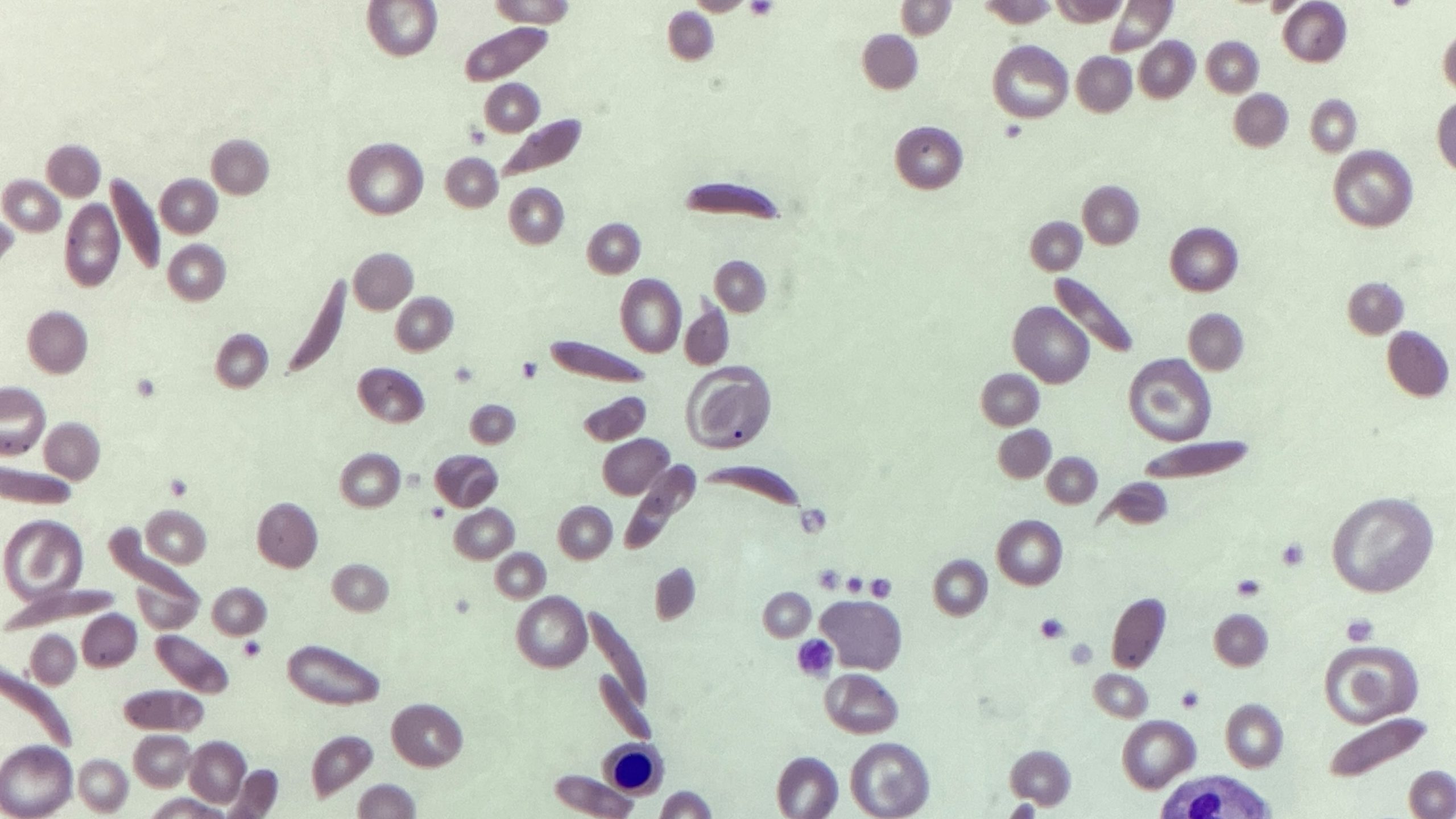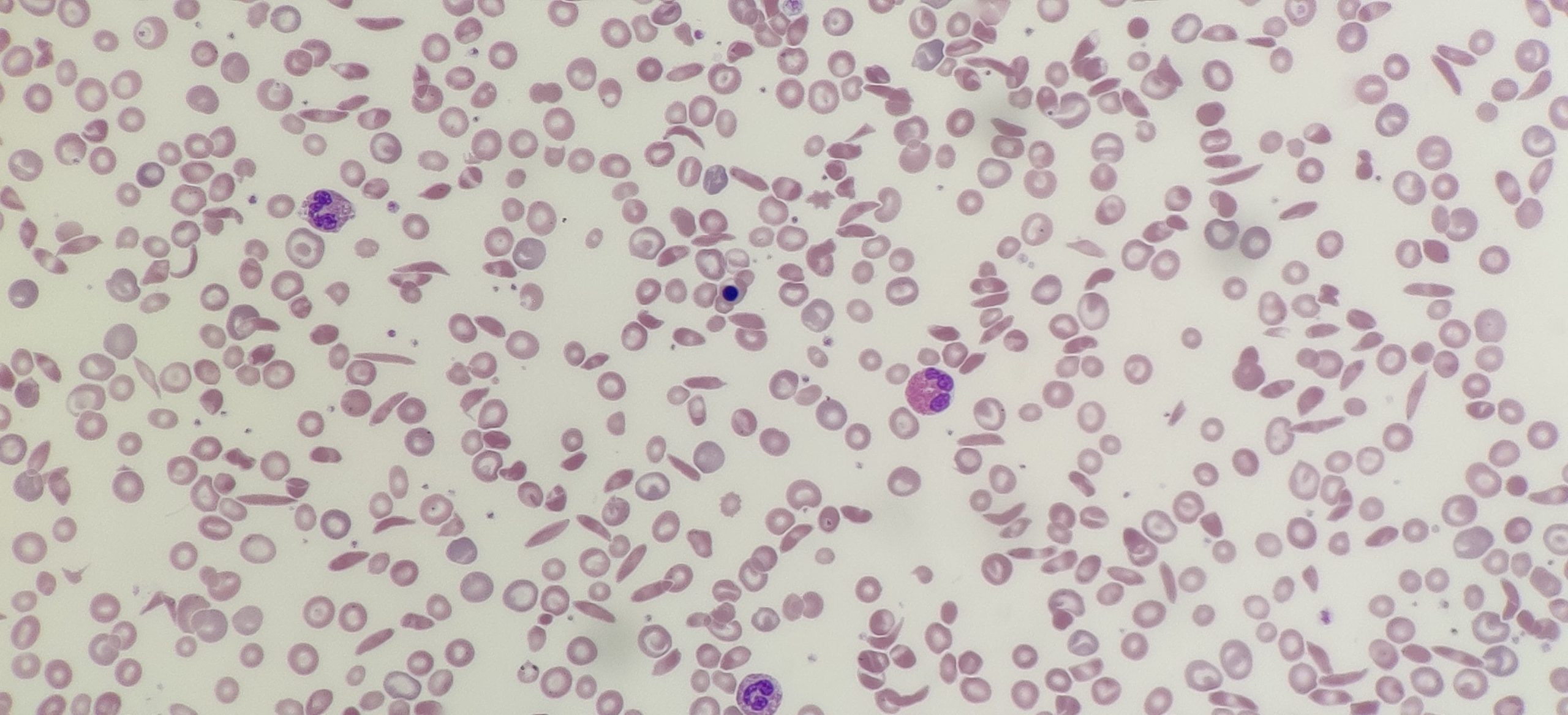Red cells: Drepanocytes

Drepanocyte, or sickle cells as they are commonly known are specifically seen in sickle cell disease. They are called such due to their shape being sickle or crescent shaped with pointed ends. Seeing sickle cells on a peripheral blood film is confirmatory for haemoglobin S. In sickle cell anaemia, you may also see boat shaped cells. These are suggestive of haemoglobin S, though not confirmatory of its presence.

Sickle cell anaemia is caused by a point mutation in the ß globin gene. This causes a confirmational change in the haemoglobin when deoxygenated, causing them to sickle. The sickling also makes the red cells rigid and so they can block the small capillaries in the brain, eyes, liver, pancreas and bone for example. This can deprive the organs of not just oxygen but also blood, hence making it extremely painful and life threatening.
Features seen on the blood film:
- Sickle cells
- Boat cells
- Anisocytosis (increased RDW)
- Howell-Jolly bodies
- Basophilic stippling
_____
Images from personal photography.
Privacy Policy | Refund & Return Policy | Only Cells LTD © 2025
